I know what you may be thinking: “What?! Backpacks are toxic, too?! Is anything safe?!”
Backpacks and other school supplies are not regulated for toxic chemicals the same way toys are… and yet, for nine or ten months out of the year, kids might be handling these materials even more than they do their toys.
But don’t fret just yet. Yes, a lot of backpacks are made with potentially harmful chemicals… But if you know what to look for (and you will after reading this article), it’s not too difficult to find a backpack that’s made out of safer, non-toxic (or at least less toxic) materials.
So, what are the toxic materials to look out for in backpacks, and why? And which brands are using safer, non-toxic materials? We’re going to break it all down for you here so that whether you’re looking for a back-to-school backpack for your little one or an everyday commuter bag for yourself, you can make the best decision for you and your family.
Table of Contents
- AT A GLANCE: Our Top Picks for Organic & Non-Toxic Backpacks
- The Best & Worst Materials Used in Backpacks
- Cotton & Organic Cotton
- Hemp
- Nylon
- Polyester
- Polyvinyl Chloride (PVC)
- Polyurethane (PU)
- Recycled Plastic
- Leather
- Plant-Based Leathers & Leather Alternatives
- Are Waterproof Backpacks Toxic?
- Our Favorite Brands For PVC-Free, Non-Toxic, & Organic Backpacks in 2023
- 1. Fluf (Best Overall for Organic Cotton Backpacks)
- 2. Terra Thread (Best 100% Organic Cotton Backpacks)
- 3. Bixbee (Best Non-Toxic Backpacks for Toddlers and Kids)
- 4. Jack Wolfskin (Best PFAS-Free Backpacks for Hiking & Camping)
- 5. Rawganique (Best for Organic Hemp Backpacks)
- 6. SoYoung (Best for Bundling School Backpacks & Lunch Boxes)
- 7. Milkdot (Lab Tested Lead-Free & Phthalate-Free)
- 8. Fjallraven (Most Variety of Options)
- 9. Madewell (Best for Vegetable-Tanned Leather Backpacks)
- 10. Allegorie (Best for Vegan Leather Backpacks)
- Where to Find More School Supples Without Toxic Chemicals
- More Common Questions About Non-Toxic, PVC-Free Backpacks
This post may contain affiliate links, which means we may earn a commission if you choose to make a purchase.
Featured image credit: Fluf
AT A GLANCE: Our Top Picks for Organic & Non-Toxic Backpacks
Best overall organic backpacks for the whole family: Fluf
Best for young kids: Bixbee
Best organic backpacks for teens & adults: Terra Thread
Best PFAS-free backpacks for camping & travel: Jack Wolfskin
Best vegetable-tanned leather backpacks: Madewell
Best natural, vegan leather backpacks: Allegorie
+ even more options below!
Related Articles:
- Non-Toxic Lunch Boxes & Food Storage Containers
- Low-Tox & Eco-Friendly School Supplies
- Low-Tox Luggage
- Organic Clothing Brands for Kids
- The Best Non-Toxic Hand Sanitizers
- PFAS-Free Outdoor Gear (like hiking backpacks)
The Best & Worst Materials Used in Backpacks
First, let’s run through the different materials most backpacks are made of, along with the pros and cons of each. Then, we’ll discuss the problem with chemicals finishes that are often added to increase water resistance.
Cotton & Organic Cotton
The Pros: Cotton is a natural material and is often biodegradable (depending on what’s been added to it). In its original form, it’s free from plastics, PVC, phthalates, and other synthetics. Of course, organic cotton is best because it’s grown and harvested without using toxic pesticides, herbicides, and fertilizers, making it more sustainable as a whole.
The Cons: The biggest downside to cotton backpacks is that without any added finishes, they aren’t waterproof. If you live in a dry climate or don’t do much outside commuting, this likely won’t be much of an issue for you. But if you live in a rainy city or are in need of a backpack for camping or hiking, you may want to consider a different material, or at least apply a non-toxic wax coating on the backpack to increase the water resistance.
Additionally, conventional cotton canvas may contain traces of pesticides and toxic fertilizers which were used to grow the cotton. (Although, I would say that buying a backpack made from organic cotton is not nearly as important for backpacks as it is for other things like food, clothing, or underwear.)
Hemp
The Pros: Hemp is a material that is healthy for both consumers and our planet. It doesn’t require chemical pesticides and fertilizers to grow, nor does it require a lot of water.
Unfortunately, hemp products have been difficult to come by since hemp farming got caught up in the war on drugs and it was illegal for U.S. farmers to grow it until recently. But we are slowly seeing a steady increase in the number of hemp products on the market, and that includes backpacks!
The Cons: Hemp is slightly more naturally water-resistant compared to cotton, but it’s still not waterproof.
To find more recommended brands for hemp backpacks and other types of bags, check out this article.
Nylon
The Pros: Although it’s synthetic, nylon is one of the “least bad” types of plastic when it comes to potential health concerns.
Nylon is relatively mold-resistant, which can be an important factor for some people with conditions that make them extra sensitive to mycotoxins, especially if your backpack is likely to get wet on a regular basis.
Being more water-resistant than something like organic cotton, it can be better for water-resistance without having to be treated with a water resistant coating made from PFAS. (I would rather have a PFAS-free backpack made out of nylon, polyester, or a similar synthetic than an organic cotton backpack that’s treated with toxic PFAS chemicals.)
Lastly, nylon can now be recycled in some places, which can help to keep some of this material out of our larger environment.
The Cons: Nylon is a type of plastic that is derived from crude oil. It is extremely water- and energy-intensive to manufacture. It’s not biodegradable, which means it also contributes to microplastic pollution as it breaks down.
Polyester
The Pros: Polyester is similar to nylon in some ways. It’s not great, but it’s also not as bad as some other synthetic materials (which we’ll get to in a minute). Unless you have a skin condition such as eczema, most people will be fine using nylon or polyester for a backpack, especially since it’s not directly against your skin.
It is also more water-resistant compared to natural materials like cotton and hemp, decreasing the need for PFAS (“forever chemicals”).
The Cons: Like nylon, polyester is a man-made synthetic plastic that is derived from petroleum. The manufacturing process has a high carbon footprint, is also not biodegradable, and contributes to microplastic pollution as it breaks down. Some of the chemicals used to manufacture polyester can be toxic, depending on how it’s made and what’s added to the fabric.
Polyvinyl Chloride (PVC)
The Pros: The only good thing about PVC from a consumer standpoint is that it’s water-resistant/waterproof. But for many people, the water-resistant properties of PVC aren’t worth the health hazard, which is why many people are trying to decrease the amount of PVC in their homes.
The Cons: Although PVC is widely used in all kinds of products today, it is actually the most toxic kind of plastic.
As its name indicates, PVC contains chlorine, which creates byproducts called dioxins and furans. These are extremely toxic chemicals. According to the World Health Organization (WHO), dioxins “can cause reproductive and developmental problems, damage the immune system, interfere with hormones and also cause cancer.”
Not only that, but PVC commonly contains phthalates (which are used to make the plastic more flexible). Phthalates are endocrine disruptors, which means they can interfere with one’s natural hormone function and lead to infertility and developmental toxicity. They’re also linked to things like diabetes and asthma, and also may be carcinogenic.
Plus, as with almost all other plastics, PVC becomes even more toxic when heated. When the plastic reaches a certain temperature, it begins to release volatile organic compounds (VOCs) into the air, which you can then breathe in.
The negative health effects are so bad and so well-established at this point that some places in the world have started banning it, especially in things like food packaging.
Polyurethane (PU)
The Pros: You may have heard about polyurethane as used in foam mattresses, but it’s also used as a type of fabric for things like backpacks and purses, as well as a film additive that’s used to make products waterproof.
Even though PU is not ideal, in my opinion, it’s definitely a better option than PFAS when it comes to water-resistance. So if you really need a waterproof backpack for camping, boating, etc., then PU is one of your better options.
The Cons: The thing about PU is that there are many different kinds of it, and some kinds are more toxic than others. From a consumer standpoint, it’s almost impossible to know what kind of PU a specific product is made from (and therefore how potentially toxic it is).
It’s not biodegradable, and like the other types of plastic, PU also releases VOCs when it’s heated.
Recycled Plastic
The Pros: Backpacks made from recycled polyester and other recycled materials tend to be a more eco-friendly option than virgin plastic since it helps to keep pollution out of our landfills and waterways, while also decreasing the fossil fuels and non-renewable resources need to create virgin products. There are a LOT of backpacks made from recycled water bottles on the market these days!
The Cons: Many products that are made from recycled plastic are made with mixed plastics, which means it’s often difficult to know exactly what kind of plastic is used. With recycled plastic, there is a lot of potential for contamination of BPA, phthalates, other endocrine disruptors, and VOCs.
Leather
The Pros: Leather is perhaps the most durable material on this list; a well-made leather backpack can last someone a lifetime—or even multiple generations! Although it’s not generally a great option for kids’ backpacks, it’s a stylish and timeless choice for adult backpacks, purses, everyday commuter bags, totes, and more.
The Cons: Leather is an animal product, which means it’s obviously not suitable for vegans. Sourcing is incredibly important. In some parts of the world, the leather industry is truly a byproduct of the meat industry that’s crucial to the local economy and the livelihoods of the people living there.
Unfortunately, there is a lot of greenwashing in this area, with brands claiming their leather products are sourced locally, as byproducts of these industries, when this is not actually the case. For this reason, radical transparency is all the more important when it comes to leather goods.
You’ll also notice that well-made, sustainably-sourced leather backpacks are more expensive than backpacks made from other materials, so that’s another consideration to keep in mind.
Toxic chemicals are also something to be very aware of when it comes to leather. Conventional leather is processed using chrome, which is toxic to the workers and the surrounding communities (since it gets washed into their waterways). When shopping for leather, look for chrome-free, vegetable-tanned leather instead. Look for the Leather Working Group (LWG) certifications, which ensure that brands have been audited by a third party for social and environmental standards.
It’s not easy to find vegetable tanned leather backpacks, but here are a few brands offer them:
- Madewell (featured below)
- Marlondo Leather Co.
- Nuraxi
- Lost Little One (Australia-based)
Plant-Based Leathers & Leather Alternatives
The Pros: Plant-based leathers can provide a stylish option for those who want their backpacks and accessories to be free of animal products.
The Cons: Just like with regular leather, there is a lot of greenwashing involved in the world of vegan leather. Many brands will market their vegan bags as “eco-friendly” and “ethical;” however, most vegan leather alternatives are just made from plastic! If you do a quick search for “vegan backpacks,” you’ll likely find that most of them are made with PU. Or even worse, a lot of brands don’t even disclose what their bags are made from. This lack of transparency with regard to materials and/or ingredients used is always a red flag.
The good news is that there are more and more brands using some plant-based leather alternatives such as Pinatex (made from pineapple scraps), cork, apple leather, Bananatex (made from banana peels), and more. While we still have some questions about the chemicals used to turn these plants into fabrics, these are likely much better options than traditional vegan leather alternatives.
Are Waterproof Backpacks Toxic?
As alluded to earlier, it’s not always the actual material that makes something toxic, but rather what is added to that material later on. A lot of brands add per-and polyfluoroalkyl substances, or PFAS, to make products waterproof or water-resistant. You may have heard of PFOA or Teflon, which fall under the PFAS umbrella.
These chemicals pose an extreme risk to humans and the environment; they have been linked to cancer, reproductive issues, immune dysfunction, and a lot more.
On things like raincoats, camping tents, backpacks, and other outdoor products, you’ll most often see this labeled as Durable Water Repellent (DWR). There are technically different types of DWR, but the most commonly-used kind over the past several decades is C8 (the same toxic chemical used by DuPont in their Teflon products). Today, there are PFAS-free DWR solutions on the market as well.
Again, when you’re choosing the best non-toxic backpacks for your specific needs, you may choose one that’s made with 100% organic/natural materials, or you may choose a more water-resistant backpack that uses synthetics. But either way, you’ll ideally want to choose one that’s completely free from PFAS if possible.
How to Make Non-Toxic Backpacks (& Other Fabrics) More Water-Resistant
There is one way that you can increase the water-resistance of your non-toxic backpack, and that’s with a Natural Waterproof Wax. This wax increases the lifespan and usability of fabrics like hemp, cotton, and more. It’s non-toxic, paraffin-free, and cruelty-free. It’s easy to apply—just check out this page for directions.
Our Favorite Brands For PVC-Free, Non-Toxic, & Organic Backpacks in 2023
Now that you know what to look for and what’s most important to you, here are our picks for the best non-toxic backpack brands for the whole family:
1. Fluf (Best Overall for Organic Cotton Backpacks)


Best for: Kids & Teens
Materials: Organic cotton with a recycled plastic lining
Price Range: $57
Available in a variety of solid colors that use low-impact dyes, Fluf is a great option for the whole family—kids, teens, and adults alike. They’re made with durable and machine-washable organic cotton and come with a padded computer sleeve that fits up to a 15-inch laptop.
In addition to their backpacks, Fluf also carries super cute food safe lunch boxes and snack bags. Everything is ethically made in India.
2. Terra Thread (Best 100% Organic Cotton Backpacks)


Best for: Tweens, Teens, & Adults
Materials: Heavy-duty organic cotton canvas
Price Range: $60-70
Okay, maybe these backpacks aren’t technically 100% organic cotton since they do contain (lead-free) zippers, but besides that—it’s all organic, baby! No polyester liners or foams or anything like that.
These organic backpacks come with a handful of ethical and sustainable certifications: Fair Trade, GOTS, Carbon Neutral, and B Corp. And they’re vegan and give back to hunger relief, too.
Terra Thread’s backpacks come in three sizes—standard, mini, and semi-mini. They carry everything from your standard black to bright colors and floral patterns. Great for school or just everyday use, they come with a laptop sleeve and several other compartments to hold your water bottle, keys, and more. They’re also machine washable.
In addition to backpacks, Terra Thread also carries duffle & gym bags, laptop sleeves, fanny packs, pencil bags, toiletry bags, and more.
3. Bixbee (Best Non-Toxic Backpacks for Toddlers and Kids)
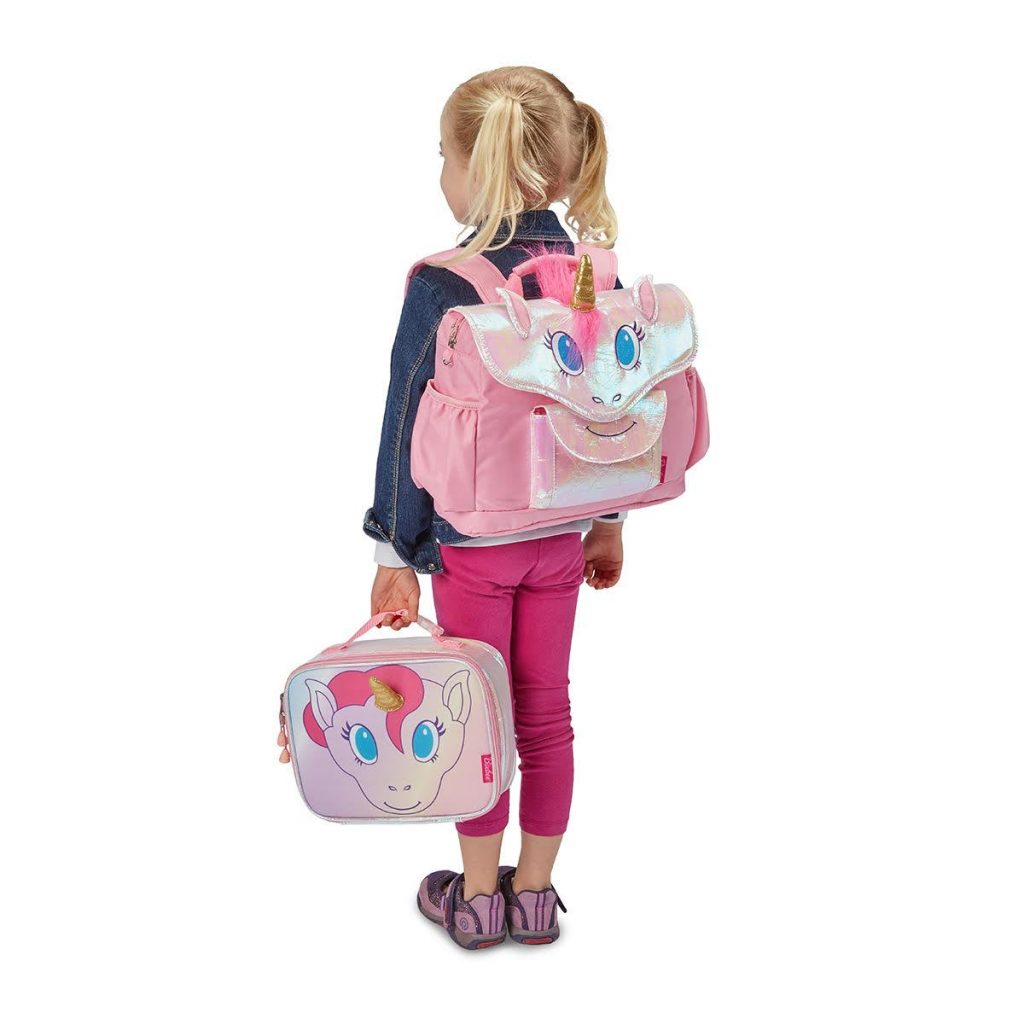

Best for: Toddlers and school-aged children
Materials: 600D polyester
Price Range: $25-50
A great option for elementary school kids, Bixbee carries several fun designs, like unicorns and dinosaurs. Even though they’re made from synthetic fabric, they’re free of toxins like PVC, BPA, phthalates, and lead.
They come in a few different sizes and have a more horizontal shape compared to other backpacks, which are much easier on kids’ backs. They have several different pockets and compartments, including ones for water bottles and laptops. In addition to backpacks, Bixbee also carries other products like lunch boxes, pencil cases, duffle bags, and more.
You can get your child’s Bixbee backpack personalized, too!
4. Jack Wolfskin (Best PFAS-Free Backpacks for Hiking & Camping)


Best for: Camping & travel
Materials: Polyester
Price Range: $40-500
It can be really difficult to find outdoor backpacks and camping gear without toxic PFAS added to them. But there are a few great brands that have removed all PFAS from all of their products, and Jack Wolfskin is one of them!
They have a wide selection of packs for camping and backpacking along with several styles of smaller backpacks that are great for travel, commuting, school, or just everyday use. They have a few backpacks for kids, too!
In addition to being free from all PFAS and PVC, Jack Wolfskin has several other sustainability initiatives, including using recycled materials, being bluesign certified, committing to human and animal welfare, and more.
For more PFAS-free outdoor gear, check out this guide.
5. Rawganique (Best for Organic Hemp Backpacks)


Best for: College students & adults
Materials: Hemp
Price Range: $50-140
Rawganique is a brand that takes non-toxic products very seriously—their designs are specifically made for the most chemically sensitive individuals.
Their backpacks are available in several different shapes & sizes including (Deluxe, Laptop Tote, and Drawstring Pack). Most of them are made out of 100% organically-grown European hemp stiff canvas and then triple-stitched (!) to last a long time. They’re all vegan and sweatshop-free, too.
Although they don’t come waterproof, you can use their safe, natural waterproofing wax to increase the water-resistance of your backpack.
6. SoYoung (Best for Bundling School Backpacks & Lunch Boxes)

Best for: Toddlers, Kids, Teens, & Adults
Materials: Cotton/Linen with a lined nylon interior
Price Range: $39-95
SoYoung offers designs that are minimalistic but fun. They’re free from toxic materials like PVC, phthalates, lead, and BPA. They’re machine washable and come in lots of different fun patterns, too.
In addition to backpacks, they also offer other school essentials like lunch boxes and ice packs, which can make Back-to-School bundling easier. They have an adult collection, too!
Plus, each purchase gives back to a non-profit organization.
7. Milkdot (Lab Tested Lead-Free & Phthalate-Free)


Best for: Toddlers & Kids
Materials: 600D polyester
Price Range: $46
While primarily focused on lunch bags, Milkdot carries several kids’ backpacks as well. Their products have been thoroughly tested for lead and phthalates by a Consumer Product Safety Commission third-party accredited lab.
8. Fjallraven (Most Variety of Options)
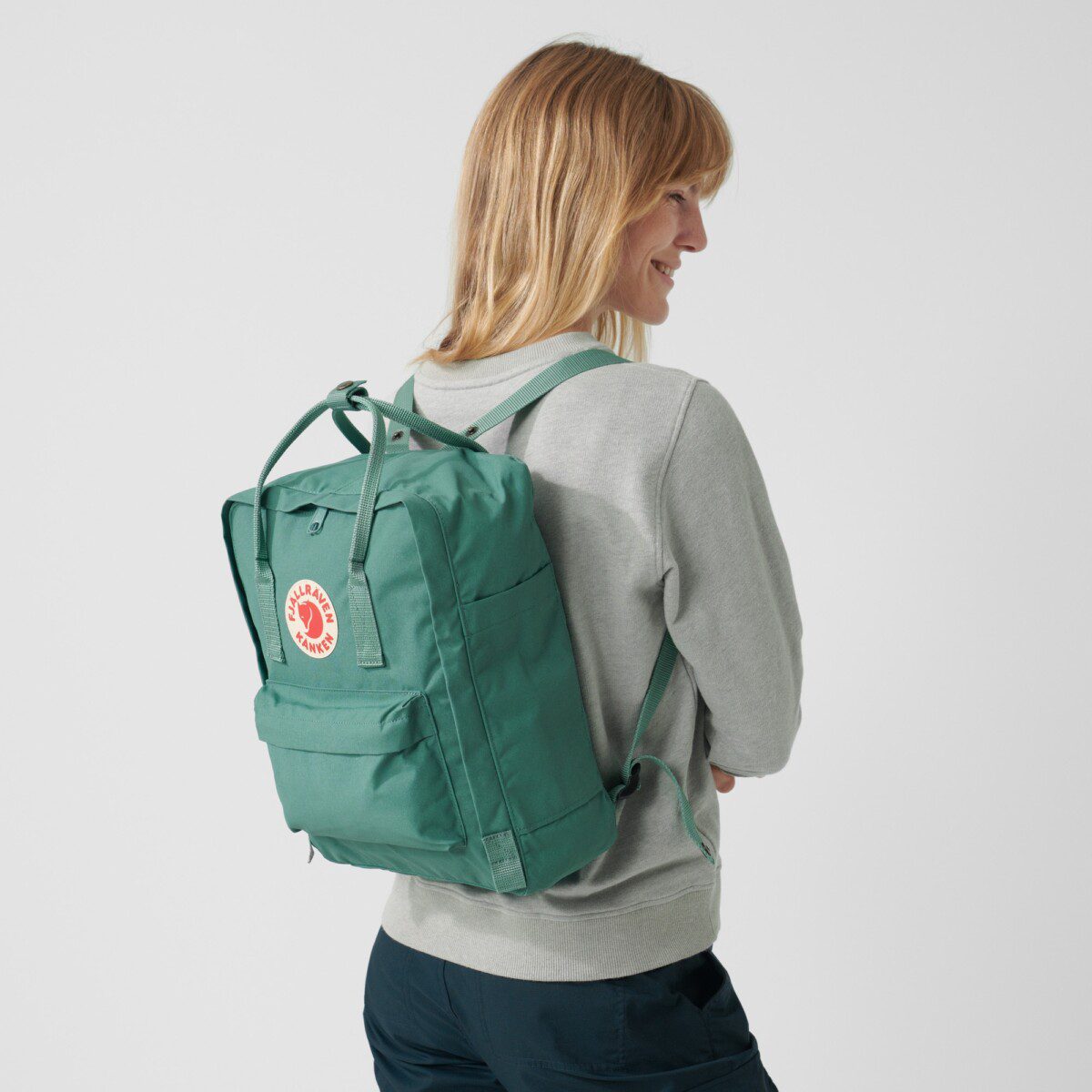

Best for: Everyday packs and hiking backpacks for teens & adults
Materials: PFAS-free synthetics
Price Range: $55-415
You’ve probably seen Fjallraven’s backpacks before—they’re very popular!
This Sweden-based brand was one of the first outdoor brands to go PFAS-free. They have a ton of options, from their most well-known Kanken bags (a casual, everyday bag with two handles on top), to hiking and trekking packs, and more.
Fjallraven’s backpacks are not made out of natural/organic materials, but they are a good option for weather-resistant backpacks that can hold up to the elements and are 100% PFAS-free. (Fjallraven was very transparent about the fact that they had a hard time getting PFAS out of their water-resistant zippers, but they told us that they have successfully made the switch and all of their zips are now PFAS-free as well!)
Fjallraven’s backpacks are literally meant to last a lifetime, and they offer various repair guides and services if your pack becomes damaged.
You can find Fjallraven at retailers like: Backcountry | Nordstrom | REI | Dillards
9. Madewell (Best for Vegetable-Tanned Leather Backpacks)


Best for: Casual, everyday wear for teens & adults
Materials: Vegetable-tanned leather
Price Range: $199-228
It’s difficult to find leather bags that are tanned without heavy metals, but Madewell has two great options:
- The zippered Lorimer Backpack is available in brown and comes with a large front pocket, adjustable straps, and can be personalized with your initials.
- The Transport Rucksack comes in black, four pockets (one outside and three inside), and closes with a drawstring + fold-over flap. You can carry this one three different ways, too: single strap, both straps, or by the sturdy top handle.
Madewell’s bags last a really long time, too. I’m still using a Madewell crossbody bag that I’ve had for over a decade, now—and I use it all the time!
10. Allegorie (Best for Vegan Leather Backpacks)

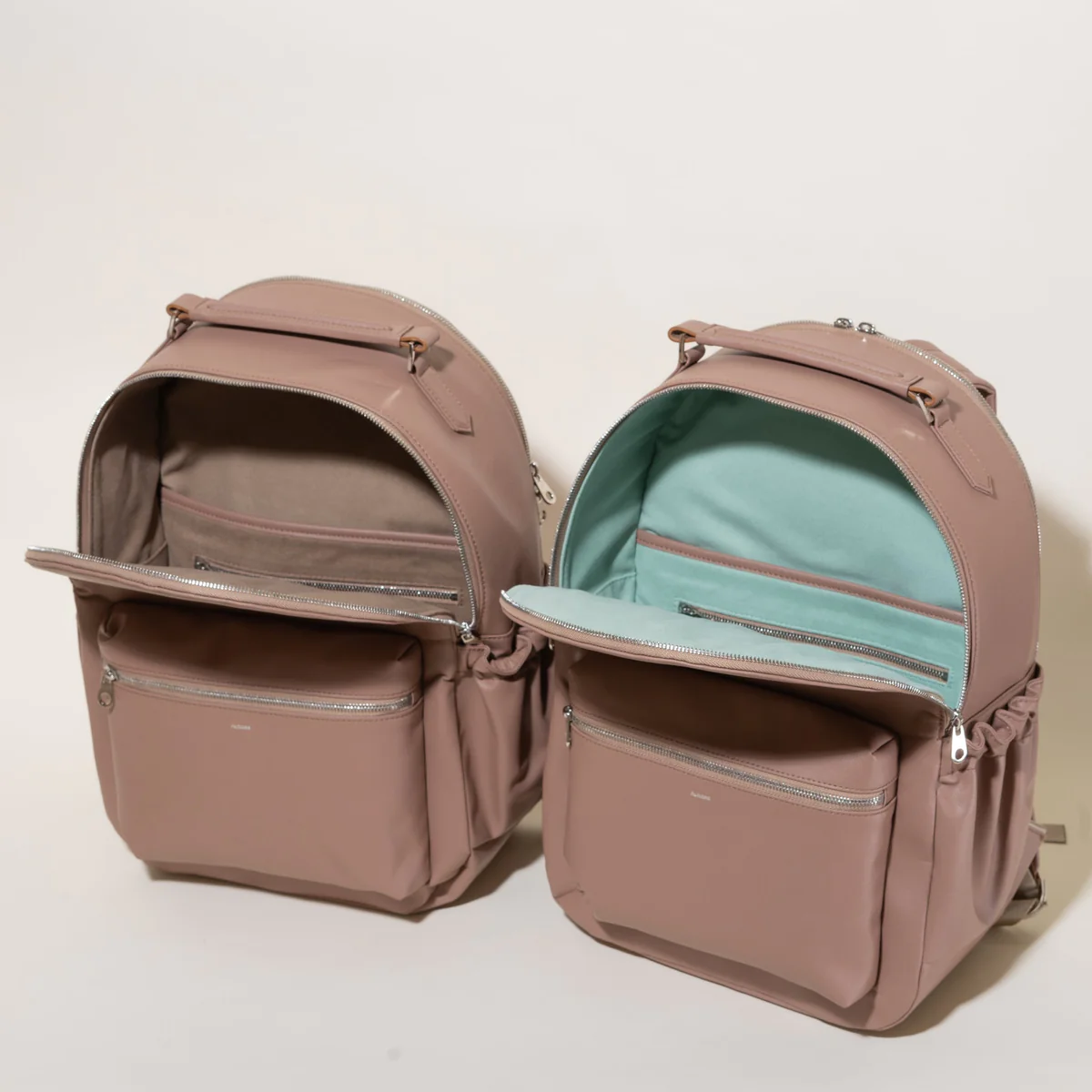
Best for: Commuting and travel for teens & adults
Materials: Apple leather + recycled plastic
Price Range: $575
Allegorie carries beautiful backpacks that are made from fruit waste! Each backpack is made with around 80% apple leather, combined with recycled polyester made from post-consumer plastic bottles. They get their apples from juice factories in order to help reduce waste and put the entire apple to use.
These vegan backpacks are made in the USA, in the heart of New York City. They come with several third-party certifications, including PETA cruelty-free, World Fair Trade Organization (WTFO) for fair trade materials, and OEKO-TEX (which means it’s been verified to be free from a list of potentially harmful chemicals).
These are very spacious, making them great for travel. It includes multiple interior pockets (including a dedicated laptop sleeve), four functional exterior pockets (including side slots for water bottles), and a sleeve on the back for attaching to your suitcase.
You can pick from several different colors, including Black or Dusty Rose (for the outside) and Turquoise, Orange, or Cedar (for the inside).
Where to Find More School Supples Without Toxic Chemicals
Here are some related guides to help you with with your safer back-to-school shopping:
- Non-Toxic Lunch Boxes
- Safer Food Storage Containers & Alternatives to Ziploc Bags
- Eco-Friendly School Supplies
- Organic Clothing Brands for Kids
- The Best Non-Toxic Hand Sanitizers
More Common Questions About Non-Toxic, PVC-Free Backpacks
Is PVC BPA-free?
Not likely. PVC can be BPA-free, but it’s more rigid PVC products (like pipes, for example) that are more likely to be BPA-free. Also, be careful about products marketed as “BPA-Free.” BPA can be replaced by its sister chemicals like BPS and BPF, which are not actually any safer than BPA. Companies can jump through this technical loophole and mislead their customers, without actually addressing the real problem that these hormone disruptors pose to our long-term health. You can read more about this here.
Does PVC-free mean phthalate-free?
Not necessarily. If a backpack contains PVC, it almost certainly contains phthalates. However, if a backpack is PVC-free, it MAY or MAY NOT contain phthalates. Phthalates can be added to almost any kind of plastic in order to make it more flexible. Since plastic backpacks tend to be very very flexible, this is something to be mindful of when shopping.
What about DEHP in backpacks?
There are some kinds of phthalates that have been restricted or banned in some kinds of children’s products, including DBP, BBP, DEHP, and more.
In 2013, scientists from the Center for Health, Environment & Justice (CHEJ) purchased 20 random back-to-school products and tested them for phthalates. 75% of the products contained potentially toxic levels of phthalates, which included DEHP. As CBS reported, “They found Disney’s Dora the Explorer Backpack contained phthalate levels over 69 times higher than the allowable federal limit for toys. The Amazing Spiderman Lunchbox contained 27 times the federal limit, while the Disney Princess Lunchbox exceeded the toy limit by 29 times. Children’s rain coats, rain boots and 3-ring binders also were found to contain the toxins.”
Again, we have to ask the question: if these chemicals are not allowed in children’s toys, then why in the world are they allowed in back-to-school products like backpacks, lunch boxes, water bottles, binders, and more? And especially at such high levels…
Do backpacks contain lead?
Technically, backpacks can be contaminated with lead, but thankfully, there is a much lower likelihood of purchasing a backpack with lead in it than one with phthalates in it. But to be safe, one way to avoid purchasing products with lead in them is to not buy products with the Prop 65 warning on them. Additionally, several of the recommended brands below specifically test their materials for lead in order to give you even more peace of mind.
If you’re worried about toxins in backpacks, try not to stress! The first piece of good news is that purchasing a non-toxic backpack is probably not as important as what you’re putting into your body (what you’re eating) or what you’re putting onto your skin (like lotion).
The second piece of good news is that there is no shortage of non-toxic backpacks on the market that come in a variety of different materials, sizes, colors, and designs. You can feel good shopping from the brands above!
To get notified about new guides, stay up to date on environmental toxin headlines, and get exclusive content delivered to your inbox once a week, sign up for Filtered Fridays!


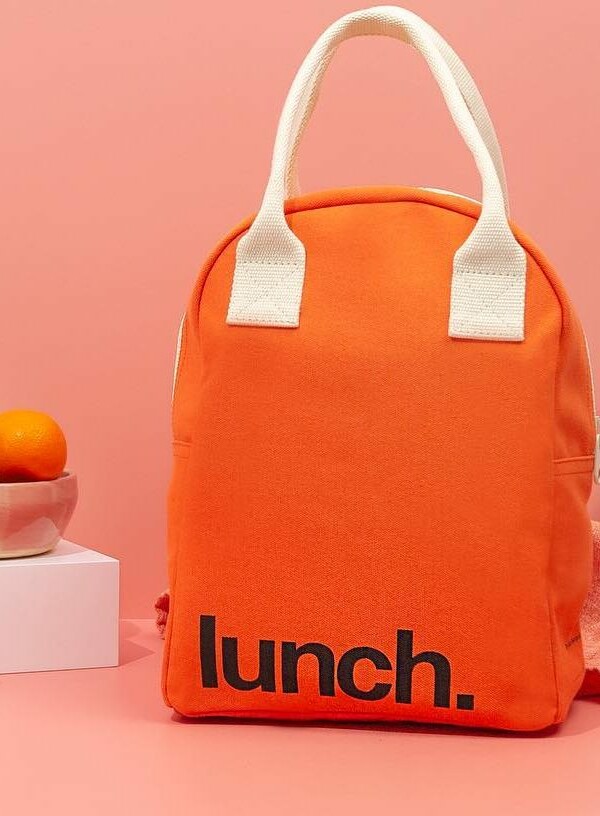
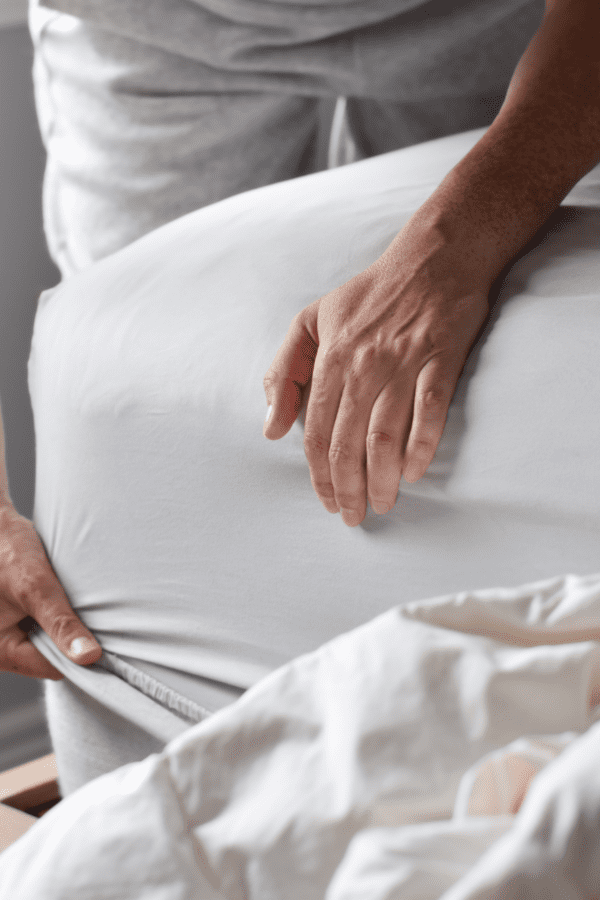

Any companies that are PFAS free for kids sports bags? For baseball specifically
Hi Sarah,
Great question! I haven’t looked into this in depth, but I did just chat with Rawlings and they informed me that none of their bags have a PFAS coating on them (nor any other sort of water-resistant treatment). I emailed DeMarini as well, though I haven’t heard back from them yet. I know Nike has a PFAS policy as well (even though they got in some trouble last year over questions about whether they were really sticking to the policy in place). If there is a specific bag you want, you could email the brand and ask. I would suggest asking them in a few different ways: “Are there any PFAS coatings added to your bags?” , “Are there any water-resistant treatments added to your bags?” Etc.
Any updates on Patagonia and North face backpacks toxicity? We are looking for backpacks that are more business/adult looking with laptop and compartments sections than these for adults. Dakine, Taragus eco lines?
Hi Edie,
Over the next few years, PFAS will be phased out of a lot of these brands’ backpacks. (This is because certain states are banning PFAS in clothing and accessories and also because stores like REI are now banning them as well.) For now though, you may want to check out Deuter (https://www.deuter.com/). They have adult backpacks with PFAS-free water repellency. However, they do come with CA Prop 65 warning labels and it’s not clear why. We’ll reach out to them and ask, but you may want to do the same to get some more info. It looks like Everlane now has a backpack they say is fluorine-free as well. And actually, it looks like SOME of North Face’s backpacks are now labeled as having a “non-PFC durable water-repellent (non-PFC DWR) finish.” (Look for it under the Details section on the product page.) I hope that helps! We’ll be updating this article again in the fall. 🙂
I’m currently looking for a bag that is not literally bad. Thank you for giving all this information that big business wouldn’t
How non toxic/chemical free are STATE backpacks?
Hi Ivey,
STATE is somewhat eco-friendly because they use recycled materials in their backpacks, but we can’t say they are non-toxic. They lack a lot of transparency about their materials… They say the bodies of their bags are made with 100% polyester, but there isn’t any info about the linings and other parts of the bags (is there any PVC?). Additionally, we don’t know anything about PFAS. They say that most of their bags are water-resistant, which means they COULD contain PFAS. We will reach out to STATE to see if they will give us some more info and then update this article accordingly!
*Update: We emailed State to ask for more info about their materials and they confirmed that their products are NOT PFAS-free.*